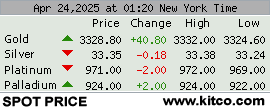
Carl Kanowsky, Esq.
I’m reading “Button Man,” a novel by Andrew Gross. The protagonist, Morris Raab, a successful New York clothing manufacturer, battles organized crime in the 1930s. The bad guys want to infiltrate Morris’ business by way of unionizing his workers.
On its face, given some of the squalid work conditions in place at that time, getting the employees better pay and a safer working environment seem commendable. And the costs to do this mainly come from the wages, right?
It’s only when you poke beneath the surface in the book do you find that “the mob” didn’t care about the sewers or warehouse people or cutters. Nope, the crooks took a percentage from the workers, then charged the employer a percentage for health, welfare and retirement of the employees, and then demanded protection money so the business didn’t burn down. The death knell for the businesses was that they had to buy from union-approved suppliers, some of whom were owned by organized crime and some of which kicked back percentages to the union. The costs of the raw goods and supplies skyrocketed.
All of these percentages added up to where any profit the garment companies made went to the union. The companies were staying in business to keep the crime bosses secure in their extravagant lifestyles.
Interesting story, but that’s 80 or 90 years ago, and most of that has been cleaned up, right?
I know some small businesses that feel as though they are staying in business to send money to the owners of shopping malls. How did this happen?
Like many things in life, rent in a shopping mall is advertised at what are essentially teaser rates. A retailer is told, “Rent at the mall is only $3.25 per square foot.” So, if you only need 1,000 square feet (which is more than adequate for many businesses), it looks like rent is going to be only $3,250.
That’s not cheap, but a prospective tenant looks at the number and believes fits into her budget. So, she signs a 5-year lease. Often what the retailer is most concerned about is location in the mall and how much the rent is. Some do not bother to read the 100-page or longer leases before signing them. Later they get some very unpleasant surprises.
They are surprised to learn that the $3.25 per square foot is only what is called “minimum rent.” Mall owners have several creative ways of getting much more than just minimum rent.
Here are a few of the additional payments tenants are required to make:
* Tenant’s share of insurance cost for the mall;
* Tenant’s share of entire Development Common Area Maintenance (“CAM”) costs;
* Tenant’s share of shopping center CAM costs;
* Tenant’s share of taxes;
* Fund contribution;
* Tenant’s share of food court CAM costs;
* Tenant’s share of advertising costs;
* Percentage rent.
Besides paying for her workers, her cost of goods and minimum rent, the small business owner is also helping the shopping center pay its insurance costs and the real property taxes the mall owes. And the retailer wants the inside and outside of the mall to look good and inviting and safe, right? Does the minimum rent help pay for that? No, those are all additional charges.
And if the retailers want the mall to advertise what a shopping mecca it is, then the mall’s tenants have to help pay for that. Many shopping centers also charge their tenants for shopping center personnel who oversee the entire complex. In other words, the tenant pays for the person who is sending them the mall’s invoices.
Then, to add insult to injury, many malls will take a percentage of any money the retailer receives, taking the percentage right off the top. It’s almost as if the retailer is being punished for being successful because the more money that comes in, the more the retailer must pay to the mall.
These extra charges often result in total money paid to the landlord mall each month to increase by at least 50 percent and perhaps to even double. Thus, the 1,000 square feet that were only $3,250 are now actually $6,500. Over a five-year period (the length of the lease), that’s $390,000, an increase of $195,000 over what only minimum rent would be for five years.
Prospective tenants: Read that lease carefully, get accurate estimates as to how much you will actually be sending the landlord monthly, and realistically assess if you are going to be making any money at this. Or, will you merely be staying in business to send the mall owners more money?
Carl Kanowsky of Kanowsky & Associates is an attorney in the Santa Clarita Valley. He may be reached by email at cjk@kanowskylaw.com. Nothing contained herein shall be or is intended to be construed as providing legal advice.
Like this:
Like Loading...
Related




 Tweet This
Tweet This Facebook
Facebook Digg This
Digg This Bookmark
Bookmark Stumble
Stumble RSS
RSS





























REAL NAMES ONLY: All posters must use their real individual or business name. This applies equally to Twitter account holders who use a nickname.
1 Comment
This is a totally misleading article written with a disgusting slant that the mainstream will not understand. To open with the correlation to organized crime is reprehensible and shyster theatrics. Retail rents in malls or elsewhere are negotiated between Landlord and Tenant as to the cost per square foot and the additional charges: Common Area Maintenance (CAM), Taxes and Insurance. These combined with the sq.ft. rents make up what is called a Triple Net Lease. Or there may be a “Gross Lease” where most of these additional charges are calculated into the per sq.ft. rent number. These costs are negotiated as is percentage rent if charged. Percentage rent is not a percentage of total sales, but a percentage of sales after a negotiated gross amount of sales has been made, a sales threshold so to speak. Bottom line is that anyone signing a lease needs to fully understand what they are signing as it is a legal document that holds both parties to the letter of that lease.